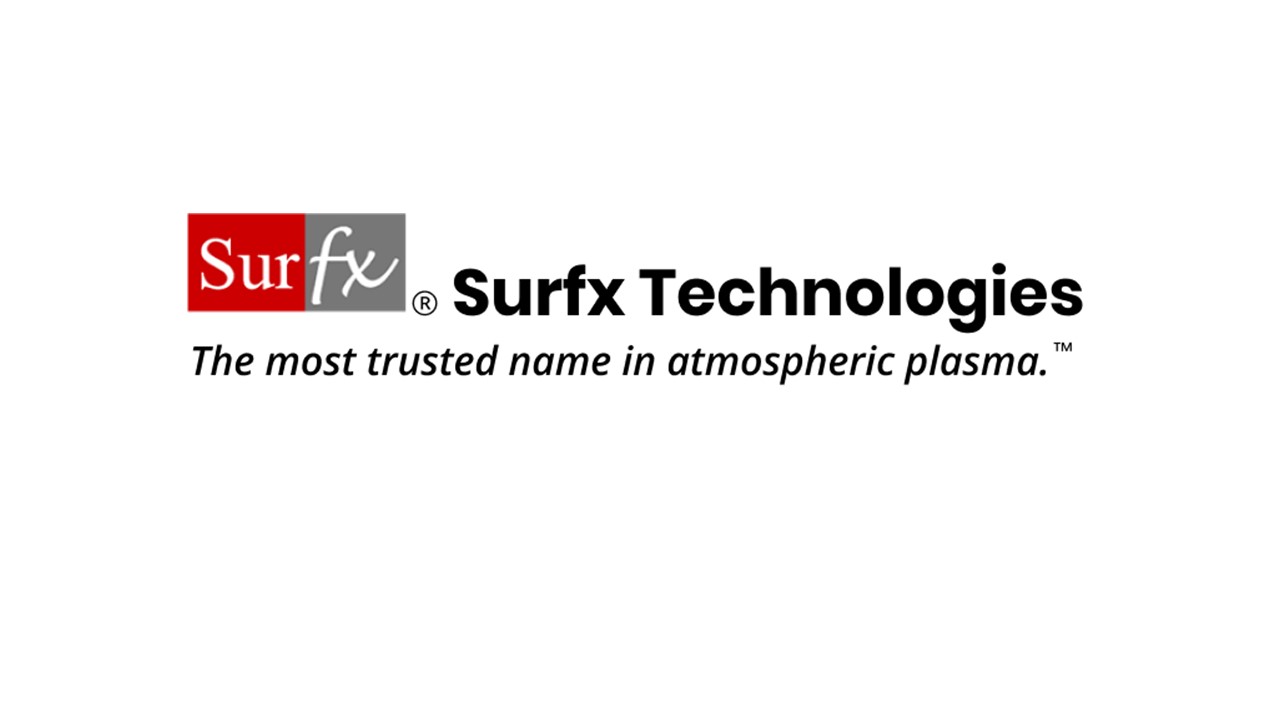Cloudspace Technologies: Transforming Digital Landscapes
Cloudspace technologies are revolutionizing how we interact with data and applications, shifting from traditional on-premises infrastructure to a more flexible, scalable, and cost-effective model. This paradigm shift has empowered businesses […]

Cloudspace technologies are revolutionizing how we interact with data and applications, shifting from traditional on-premises infrastructure to a more flexible, scalable, and cost-effective model. This paradigm shift has empowered businesses and individuals alike, offering unprecedented access to computing resources and services on demand.
From personal cloud storage solutions to enterprise-grade cloud platforms, cloudspace technologies have become integral to modern life. They enable businesses to innovate faster, streamline operations, and reach new markets, while individuals can enjoy the benefits of enhanced productivity, collaboration, and access to a wide range of online services.
What is Cloud Space Technology?
Cloud space technology, often referred to as cloud computing, is a way of delivering computing services—including servers, storage, databases, networking, software, analytics, and intelligence—over the Internet (“the cloud”) to offer faster innovation, flexible resources, and economies of scale. You can think of it as renting computing power and resources instead of owning and maintaining your own hardware and software.
Components of Cloud Space Technology
Cloud space technology is built on a foundation of interconnected components that work together to deliver services. These components include:
- Infrastructure: This encompasses the physical hardware and networking equipment that make up the cloud. This includes servers, data centers, and network connections.
- Software: Cloud providers develop and maintain a wide range of software applications, including operating systems, databases, virtualization software, and middleware.
- Services: Cloud services are the actual offerings that are provided to users. These services can be categorized into three main types:
- Infrastructure as a Service (IaaS): This provides access to fundamental computing resources, such as servers, storage, and networking.
- Platform as a Service (PaaS): This provides a platform for developing and deploying applications, including tools and services for building, testing, and deploying applications.
- Software as a Service (SaaS): This delivers fully functional software applications over the internet, such as email, CRM, and collaboration tools.
Real-world Examples of Cloud Space Technology
Cloud space technology is used across a wide range of industries, from small businesses to large enterprises. Some common examples include:
- E-commerce: Online retailers like Amazon and eBay rely heavily on cloud space technology to manage their websites, process orders, and store customer data.
- Healthcare: Hospitals and clinics use cloud space technology to store patient records, manage appointments, and provide telemedicine services.
- Financial Services: Banks and other financial institutions use cloud space technology to manage transactions, process payments, and analyze financial data.
- Education: Schools and universities use cloud space technology to provide online learning platforms, store student records, and manage administrative tasks.
Benefits of Cloud Space Technology
Cloud space technology offers a multitude of advantages for businesses and individuals, surpassing traditional IT infrastructure in several aspects. These benefits stem from the inherent flexibility, scalability, and cost-effectiveness of cloud computing.
Enhanced Productivity and Collaboration
Cloud space technology empowers businesses and individuals to work more efficiently and collaboratively. By providing access to data and applications from any device with an internet connection, cloud platforms eliminate geographical limitations and facilitate seamless teamwork.
- Real-time Collaboration: Cloud-based applications, such as Google Docs and Microsoft Office 365, enable real-time collaboration on documents, spreadsheets, and presentations. Multiple users can simultaneously edit and view files, fostering communication and streamlining workflows.
- Centralized Data Storage: Cloud storage solutions, like Dropbox and Google Drive, provide a centralized repository for all files, eliminating the need for multiple local storage devices and simplifying data management. This centralized storage also enhances data security and accessibility.
- Remote Work and Mobility: Cloud technology enables remote work and mobility, allowing employees to access company resources and collaborate with colleagues from any location with an internet connection. This flexibility enhances work-life balance and attracts talent from diverse geographical locations.
Cost-Effectiveness and Scalability
Cloud space technology offers significant cost savings compared to traditional IT infrastructure. Cloud providers handle infrastructure maintenance, software updates, and security, reducing the need for in-house IT staff and capital expenditure on hardware. Additionally, cloud computing’s scalability allows businesses to adjust their resources based on demand, minimizing wasted resources and maximizing efficiency.
- Pay-as-you-go Model: Cloud services operate on a pay-as-you-go model, where users only pay for the resources they consume. This eliminates upfront investments in hardware and software, reducing initial costs and allowing businesses to scale their IT infrastructure according to their needs.
- Reduced IT Costs: Cloud providers manage infrastructure maintenance, security updates, and software upgrades, reducing the need for in-house IT staff and associated costs. This frees up internal resources for core business activities and allows businesses to focus on their core competencies.
- Scalability and Flexibility: Cloud computing provides unparalleled scalability, allowing businesses to quickly adjust their IT resources based on demand. This flexibility enables businesses to handle peak workloads without investing in additional hardware or software, optimizing resource utilization and minimizing costs.
Enhanced Security and Reliability
Cloud space technology offers robust security features and high levels of reliability, surpassing traditional IT infrastructure in many cases. Cloud providers invest heavily in security infrastructure and employ advanced security protocols to protect data and applications from unauthorized access and cyber threats.
- Data Backup and Disaster Recovery: Cloud providers offer robust data backup and disaster recovery solutions, ensuring data availability and business continuity in case of hardware failures or natural disasters. This redundancy minimizes downtime and protects critical business data.
- Security Measures: Cloud providers employ advanced security measures, including encryption, access control, and threat monitoring, to protect data and applications from unauthorized access and cyber threats. These measures enhance data security and provide peace of mind for businesses and individuals.
- Compliance and Regulations: Cloud providers often comply with industry-specific regulations and compliance standards, such as HIPAA for healthcare and PCI DSS for payment card processing. This simplifies compliance efforts for businesses and ensures data security and privacy.
Innovation and Agility
Cloud space technology fosters innovation and agility by providing businesses with access to cutting-edge technologies and tools. Cloud platforms enable businesses to quickly adopt new technologies and experiment with innovative solutions, accelerating their digital transformation journey.
- Access to Latest Technologies: Cloud providers constantly update their platforms with the latest technologies and features, providing businesses with access to cutting-edge tools and services. This eliminates the need for businesses to invest in expensive hardware and software upgrades, keeping them at the forefront of technological advancements.
- Rapid Deployment and Scalability: Cloud platforms enable rapid deployment and scalability, allowing businesses to quickly launch new products and services and adjust their IT infrastructure based on demand. This agility fosters innovation and enables businesses to respond quickly to changing market conditions.
- Integration and Interoperability: Cloud platforms offer seamless integration with other applications and services, enabling businesses to create customized solutions and streamline workflows. This interoperability enhances efficiency and fosters innovation by facilitating data sharing and collaboration across different systems.
Types of Cloud Space Technologies
Cloud space technologies are implemented in various ways, each offering distinct advantages and disadvantages. Understanding these types is crucial for choosing the most suitable option for specific needs and requirements.
Public Cloud
Public cloud services are offered by third-party providers, making resources available to anyone over the internet.
- Characteristics: Public clouds are typically pay-as-you-go models, offering high scalability, flexibility, and cost-effectiveness. They are managed by the provider, eliminating the need for on-premises infrastructure and maintenance.
- Advantages: Public clouds provide rapid deployment, reduced upfront costs, and access to advanced technologies. They are ideal for businesses with fluctuating workloads or those looking to minimize IT investments.
- Disadvantages: Security concerns, potential vendor lock-in, and limited control over infrastructure are some drawbacks of public clouds. Data privacy and compliance might also be challenges.
- Examples: Amazon Web Services (AWS), Microsoft Azure, Google Cloud Platform (GCP), and Alibaba Cloud are prominent examples of public cloud providers.
Private Cloud
Private clouds are dedicated infrastructure resources within an organization’s own data center or a colocation facility.
- Characteristics: They offer complete control over infrastructure and data, ensuring high security and compliance. Private clouds are typically deployed on-premises or in a dedicated environment.
- Advantages: Private clouds provide enhanced security, customization, and compliance capabilities. They are suitable for organizations with strict data privacy requirements or those needing complete control over their IT environment.
- Disadvantages: Private clouds require significant upfront investment, ongoing maintenance, and specialized IT expertise. They may not be as scalable or cost-effective as public clouds.
- Examples: Organizations like banks, healthcare institutions, and government agencies often opt for private clouds due to their stringent security and compliance requirements.
Hybrid Cloud
Hybrid clouds combine public and private cloud environments, leveraging the strengths of each.
- Characteristics: Hybrid clouds allow organizations to use public cloud resources for specific workloads while maintaining sensitive data and critical applications on their private cloud. They offer flexibility and scalability while addressing security and compliance concerns.
- Advantages: Hybrid clouds provide the flexibility to move workloads between environments based on need, enabling organizations to optimize costs and performance. They also offer a balance between control and agility.
- Disadvantages: Managing a hybrid cloud environment can be complex, requiring expertise in both public and private cloud technologies. Integration and interoperability between environments can also pose challenges.
- Examples: Companies with hybrid cloud strategies might use public cloud services for data analytics and development while keeping their core applications on their private cloud.
Multi-Cloud, Cloudspace technologies
Multi-cloud strategies involve utilizing multiple public cloud providers simultaneously.
- Characteristics: This approach offers flexibility and redundancy by distributing workloads across different providers. It can also help mitigate vendor lock-in and optimize costs by leveraging the best services from each provider.
- Advantages: Multi-cloud strategies enhance resilience, provide access to a wider range of services, and foster competition among providers, potentially leading to better pricing and innovation. They also offer flexibility and scalability by leveraging the strengths of different cloud providers.
- Disadvantages: Managing multiple cloud environments can be complex and require specialized skills. Integration and interoperability across different platforms can also pose challenges. Data consistency and security across multiple providers need careful consideration.
- Examples: Organizations might use AWS for compute resources, Azure for data storage, and GCP for machine learning, leveraging the best features of each platform.
Key Cloud Space Technologies
Cloud space technology relies on a combination of foundational technologies that enable its capabilities and functionalities. These technologies work together to provide the infrastructure, scalability, and flexibility that characterize cloud computing.
Virtualization
Virtualization is a key technology that allows multiple operating systems to run concurrently on a single physical server. This is achieved by creating virtual machines (VMs) that act as independent computers within the physical server. VMs have their own dedicated resources, such as CPU, memory, and storage, and can be isolated from each other.
- Hypervisors: A hypervisor is a software layer that manages the virtual machines and allocates resources to them. Hypervisors can be either Type 1 (bare-metal) or Type 2 (hosted). Type 1 hypervisors run directly on the physical hardware, while Type 2 hypervisors run on top of an operating system.
- Virtualization benefits: Virtualization offers several advantages, including improved server utilization, reduced hardware costs, and enhanced flexibility in deploying and managing applications.
- Real-world examples: Virtualization is widely used in cloud deployments, such as Amazon EC2, Microsoft Azure, and Google Compute Engine. These platforms provide virtual machines as a service, allowing users to provision and manage computing resources on demand.
Containerization
Containerization is a technology that packages applications and their dependencies into self-contained units called containers. Containers provide a lightweight and portable way to deploy applications, ensuring that they run consistently across different environments.
- Container images: Container images are created from a base operating system and contain all the necessary files, libraries, and configurations for an application to run.
- Container orchestration: Container orchestration tools, such as Docker Swarm and Kubernetes, are used to manage and deploy containers at scale. These tools automate tasks such as container scheduling, networking, and scaling.
- Benefits of containerization: Containerization offers benefits such as improved application portability, faster deployment times, and efficient resource utilization.
- Real-world examples: Containerization is widely used in cloud-native applications and microservices architectures. Companies like Netflix and Uber use containerization to deploy and manage their applications in highly scalable and resilient environments.
Serverless Computing
Serverless computing is a cloud computing model where the cloud provider manages the underlying infrastructure, including servers and operating systems. Developers only need to focus on writing and deploying their code, without worrying about server management.
- Function as a Service (FaaS): Serverless computing is often implemented as Function as a Service (FaaS), where code is executed in response to events or triggers. Popular FaaS platforms include AWS Lambda, Google Cloud Functions, and Azure Functions.
- Benefits of serverless computing: Serverless computing offers benefits such as reduced operational overhead, improved scalability, and pay-per-use pricing.
- Real-world examples: Serverless computing is used in various applications, such as API endpoints, data processing, and event-driven architectures. Companies like Amazon, Netflix, and Uber use serverless computing to scale their applications and reduce their infrastructure costs.
Cloud Space Security
Cloud space technology offers numerous advantages, but it also presents unique security challenges. Safeguarding sensitive data and ensuring the integrity of cloud-based systems is paramount. This section explores the security challenges, essential security measures, and best practices for securing cloud space environments.
Data Encryption
Data encryption is a fundamental security measure in cloud space. It involves converting data into an unreadable format, making it incomprehensible to unauthorized individuals.
- Encryption at Rest: This refers to encrypting data while it is stored on cloud servers. This ensures that even if the server is compromised, the data remains protected. Examples include encrypting databases, files, and other data storage mechanisms.
- Encryption in Transit: This involves encrypting data while it is being transmitted between different locations, such as from a user’s device to the cloud server or between cloud servers. This protects data from interception during transmission.
Access Control
Access control is another crucial aspect of cloud security. It involves defining and enforcing rules that determine who can access specific resources in the cloud environment.
- Role-Based Access Control (RBAC): This approach assigns users specific roles, each with predefined permissions. For instance, an administrator might have full access, while a regular user might only have read-only access. RBAC simplifies access management and reduces the risk of unauthorized access.
- Multi-Factor Authentication (MFA): MFA adds an extra layer of security by requiring users to provide multiple forms of authentication, such as a password and a one-time code from a mobile device. This makes it significantly harder for unauthorized individuals to gain access to accounts.
Threat Detection
Threat detection is essential for proactively identifying and mitigating potential security threats. This involves monitoring cloud environments for suspicious activities and implementing measures to respond to detected threats.
- Security Information and Event Management (SIEM): SIEM solutions collect and analyze security data from various sources within the cloud environment. They can detect anomalies, identify potential threats, and generate alerts for security teams.
- Intrusion Detection Systems (IDS): IDS are designed to detect malicious activities in real-time. They analyze network traffic and system logs to identify suspicious patterns. IDS can trigger alerts and block suspicious connections, helping to prevent successful attacks.
Best Practices for Securing Cloud Space Environments
- Regular Security Audits: Conduct regular security audits to assess the effectiveness of existing security controls and identify vulnerabilities. These audits should be performed by independent experts or qualified security professionals.
- Employee Training: Train employees on cloud security best practices, including safe password management, phishing awareness, and how to report suspicious activities. A well-informed workforce is essential for maintaining a secure cloud environment.
- Patch Management: Implement a robust patch management process to ensure that all software and operating systems are kept up to date with the latest security patches. This helps to mitigate vulnerabilities that attackers might exploit.
- Data Backup and Recovery: Regularly back up critical data and ensure that you have a disaster recovery plan in place. This ensures that you can recover data in case of a security breach or other data loss event.
- Compliance with Regulations: Ensure that your cloud deployments comply with relevant industry regulations and standards, such as GDPR, HIPAA, or PCI DSS. Compliance helps to protect sensitive data and demonstrates your commitment to security.
Cloud Space Trends and Future: Cloudspace Technologies
The cloud space is constantly evolving, driven by advancements in technology and the changing needs of businesses. Several emerging trends are shaping the future of cloud computing, influencing how organizations leverage its power and adapt to new possibilities.
Edge Computing
Edge computing brings computation and data storage closer to the source of data, reducing latency and improving performance. This approach is crucial for applications that require real-time processing, such as autonomous vehicles, industrial automation, and augmented reality.
Edge computing is transforming industries by enabling faster decision-making, enhancing user experiences, and unlocking new opportunities for innovation.
Serverless Computing
Serverless computing allows developers to focus on writing code without managing servers. It offers a pay-as-you-go model, enabling businesses to scale their applications efficiently and reduce operational costs. This trend is gaining traction as companies seek to streamline their operations and optimize resource utilization.
Serverless computing is a game-changer for businesses looking to optimize their cloud infrastructure, reduce operational overhead, and focus on delivering value.
Artificial Intelligence (AI)
AI is rapidly changing the landscape of cloud computing, enabling intelligent automation, predictive analytics, and personalized experiences. Cloud platforms are increasingly integrating AI capabilities, empowering businesses to harness the power of data for better decision-making and improved efficiency.
AI is transforming cloud computing by enabling smarter applications, personalized services, and automated processes, leading to a more intelligent and connected world.
Closing Summary

As cloudspace technologies continue to evolve, we can expect to see even more innovative applications and solutions emerge. From the rise of edge computing and serverless functions to the integration of artificial intelligence, the future of cloudspace holds immense potential for transforming the way we live, work, and interact with the digital world. The adaptability and scalability of cloudspace technologies ensure they will remain at the forefront of digital innovation, driving progress and shaping the future of computing.
Cloud space technologies are transforming how businesses operate, offering a scalable and flexible infrastructure. To navigate this evolving landscape, companies often seek the expertise of a technology integration specialist: who can bridge the gap between cloud services and existing systems.
This expertise is crucial for seamless integration and maximizing the benefits of cloud technologies.









